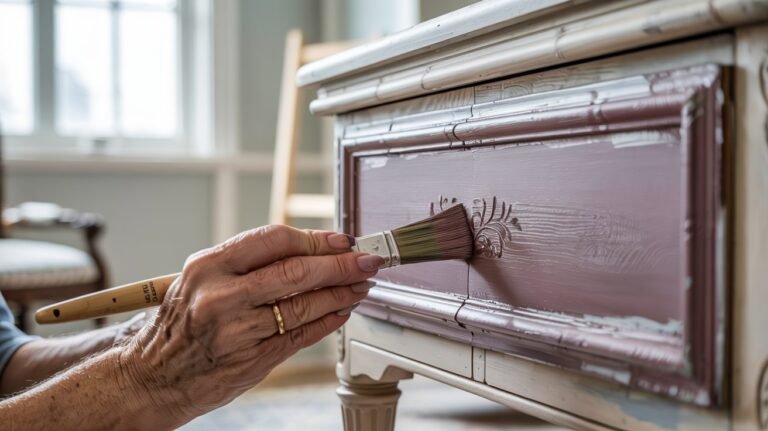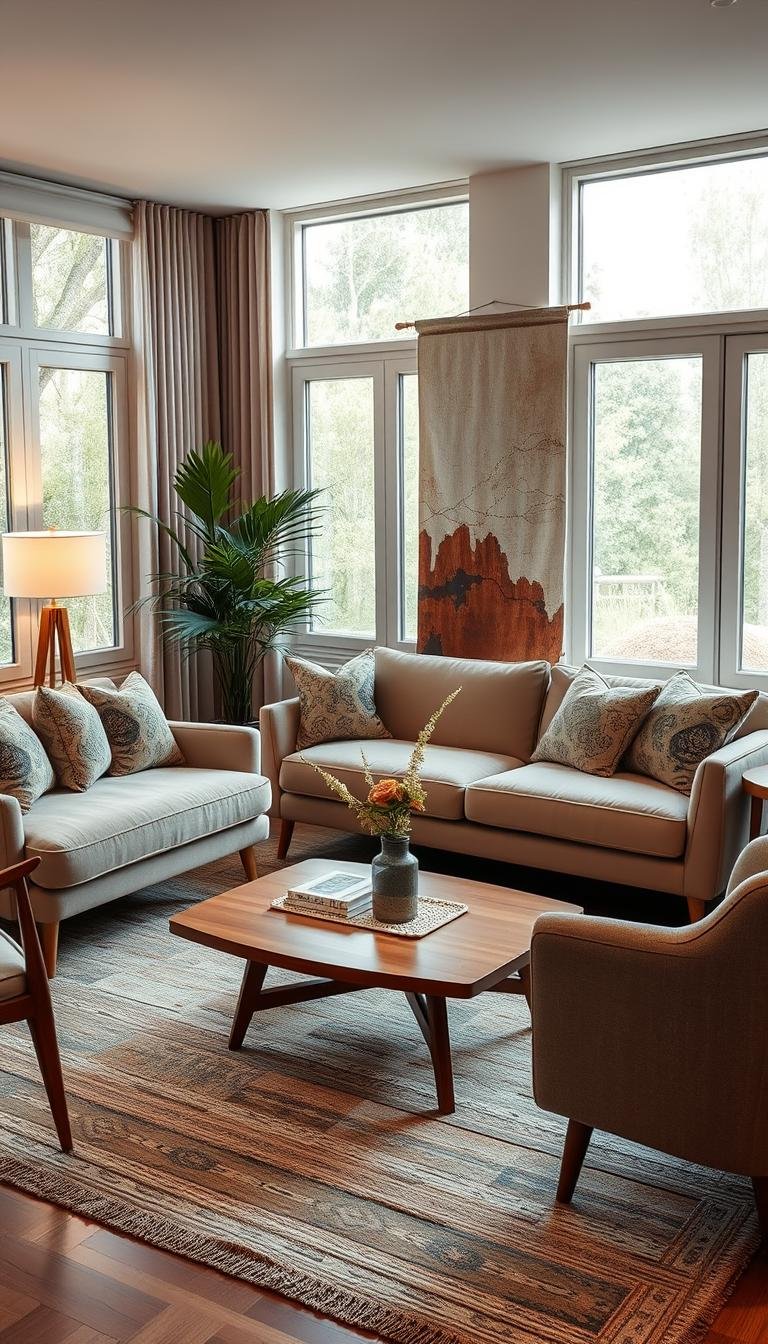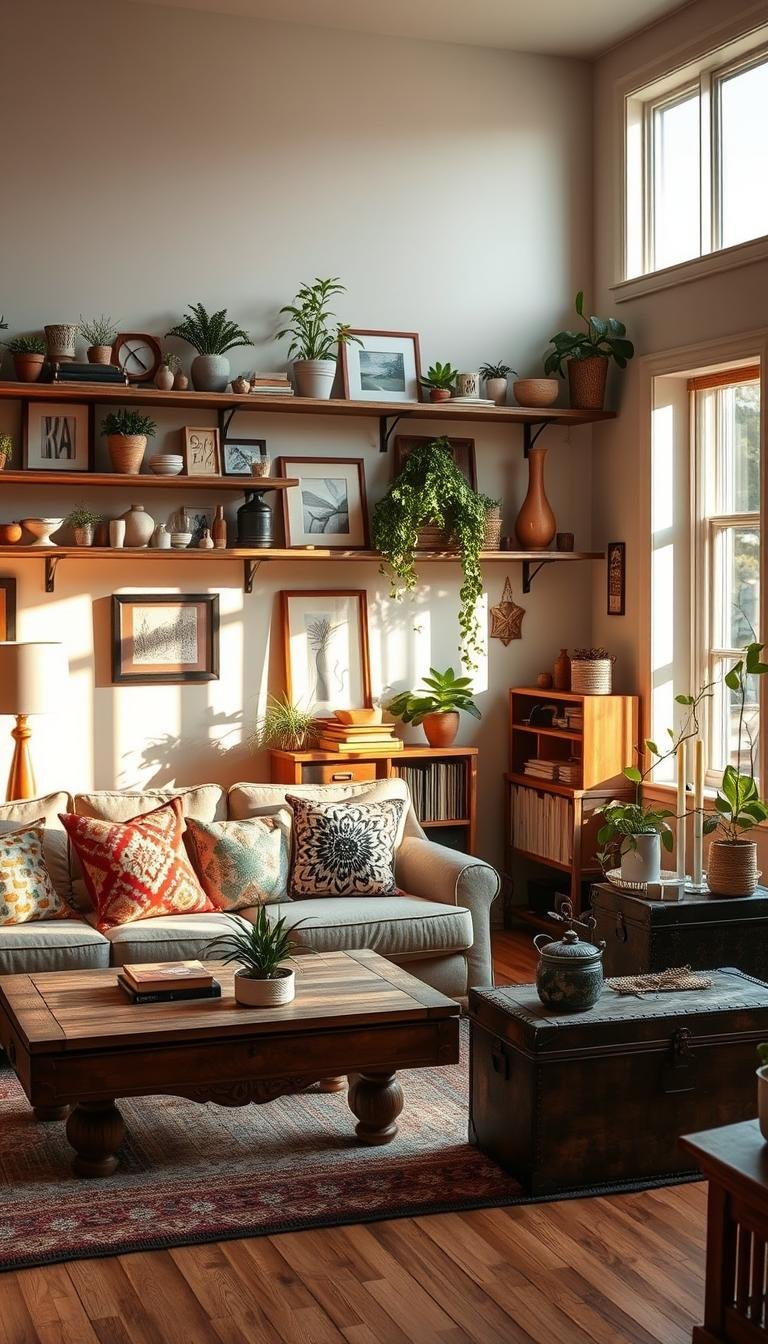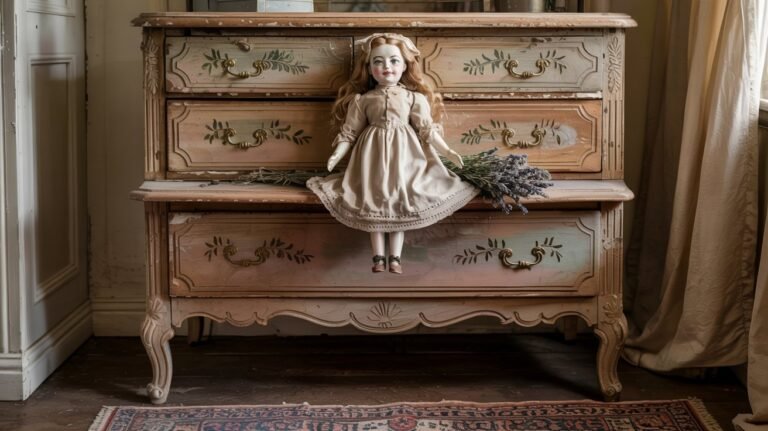Budget Kitchen Decor with Thrifted Ceramics
Decorating a kitchen doesn’t have to cost a fortune. In fact, some of the most heartwarming and conversation-starting pieces in my home came from secondhand stores. Using thrifted ceramics has become my favorite method for achieving budget kitchen decor with personality, charm, and meaning.
If you’ve ever held a chipped old plate and thought, “This has a story,” then you’re going to love this. Here’s how I use thrifted ceramics for kitchen styling, while also making sure everything is safe, functional, and beautiful.
One of my favorite things about budget kitchen decor thrifted ceramics is how each piece feels personal.
1. Turn Vintage Plates into Wall Decor
How I Do It:
- I look for plates with bold colors, fine patterns, or floral motifs.
- I avoid pieces with large chips or unstable glazing.
- I use plate hangers or adhesive discs and create wall groupings above countertops or shelves.

🖼 Imagine a soft cream wall scattered with mismatched floral plates—some glossy, some matte, all telling stories from different tables, now together in your kitchen.
2. Style Open Shelves with Mismatched Mugs
How I Do It:
- I collect mugs in similar color tones but different shapes and patterns.
- I tuck dried herbs, cinnamon sticks, or small kitchen tools inside them.
- If the mug is chipped, I turn the damaged side to the back.
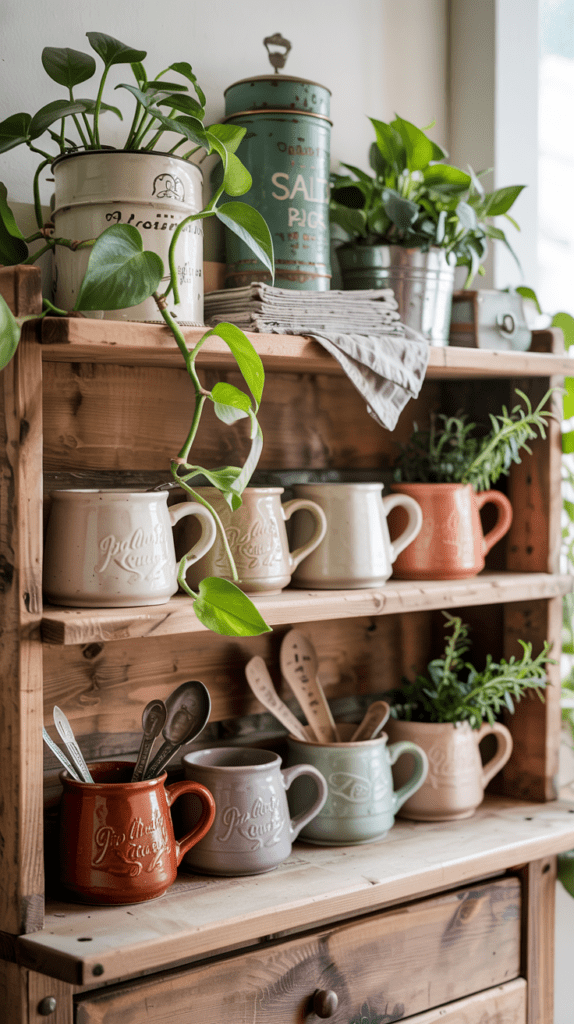
🌿 One of my shelves has a curved lilac mug with a tiny chip—now it holds a cluster of dried thyme and it smells like summer all year round.
3. Repurpose Bowls as Countertop Catch-Alls
How I Repurpose Handmade Ceramics for Budget Kitchen Decor Ceramics:
- I use vintage bowls to hold garlic, teabags, or citrus—anything that doesn’t require direct food contact if the bowl is untested.
- I clean them well and line them with a small napkin if needed.
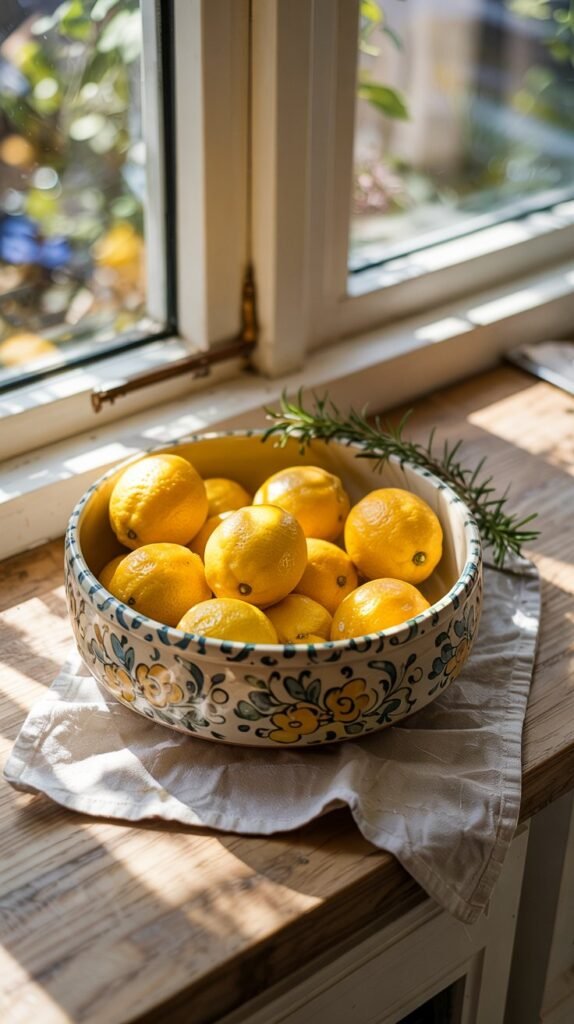
🧺 There’s a wide, faded yellow ceramic bowl on my windowsill filled with lemons and cloves. It catches the morning light and brightens up my whole routine.
4. Stack Plates for Dimension
How I Do It:
- I mix old and new—placing vintage salad plates on top of modern white dinner plates.
- I leave them stacked on display shelves or counters for a casual, layered look.
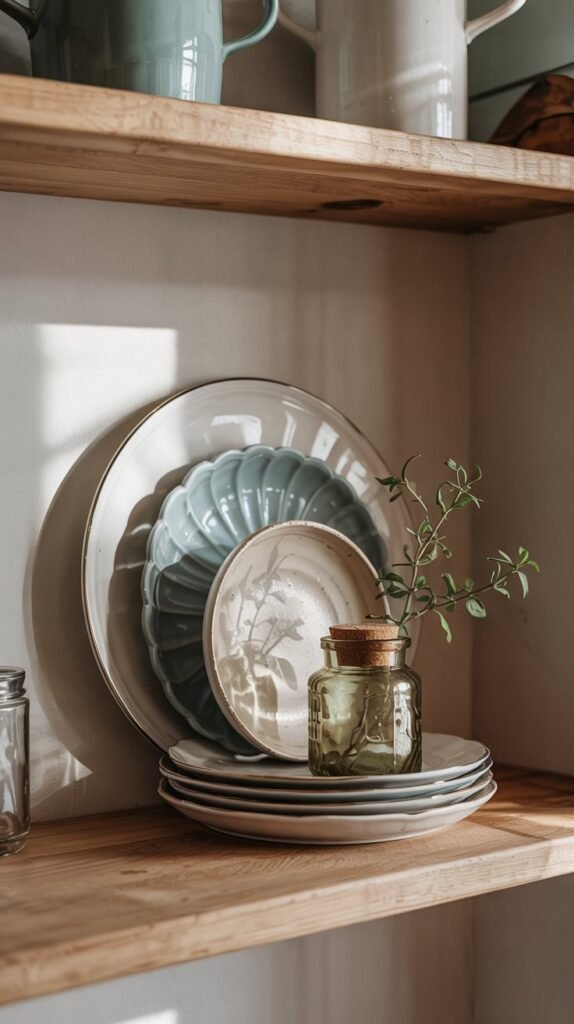
🖼 A white plate, topped with a scalloped blue vintage dish, then a handmade saucer. Each layer adds visual texture and charm.
5. Add Texture with Handmade Ceramics
How I Do It:
- I look for small-batch or handmade thrifted bowls and mugs.
- These often have unique glazes or uneven shapes that add warmth to the space.
- I use them for salt near the stove or to hold small kitchen tools.
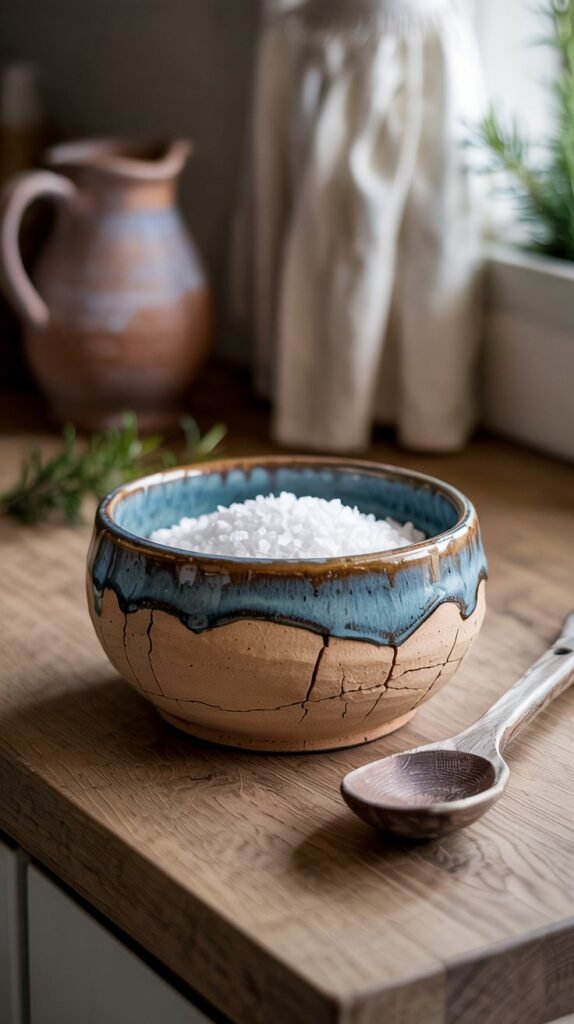
🔥 A sandy-toned, slightly lopsided bowl holds my measuring spoons. It’s imperfect, earthy, and completely perfect to me.
6. Make Teacup Candles
How I Do It:
- I melt soy wax and pour it into vintage teacups with a wick.
- I sometimes add lavender or vanilla oil for a kitchen-friendly scent.
- These sit near my sink or coffee station and double as decor.
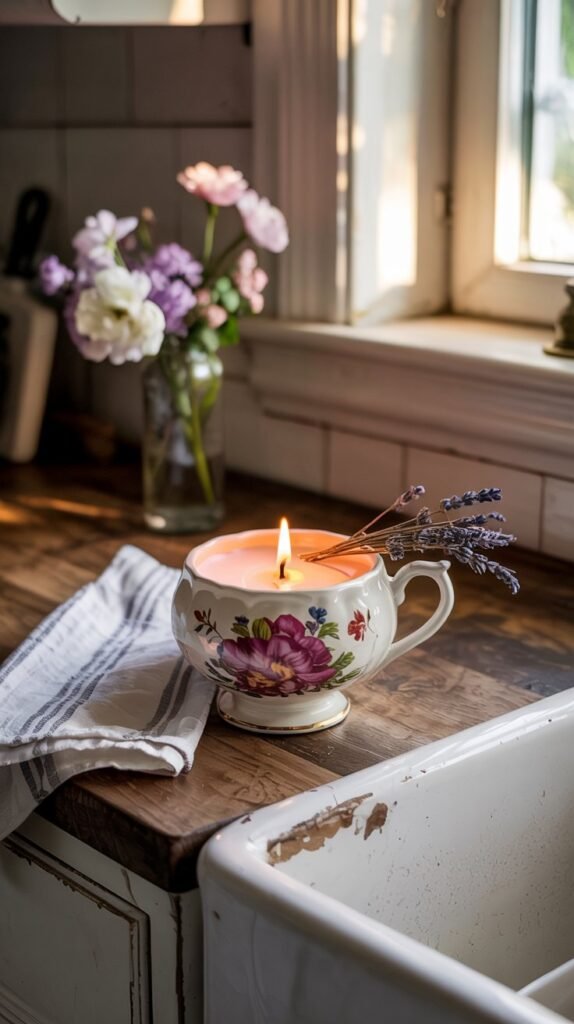
🕯 There’s nothing like washing dishes beside a softly burning teacup candle that smells like vanilla and cardamom.
7. Always Check for Food Safety
Before using any thrifted ceramics with food, I always test for safety—especially older pieces with bright colors or worn glaze.
What I Do:
- I use an EPA-recommended lead test kit at home. The thing is, many older ceramics (especially pre-1980s) used lead-based glazes. Over time, lead can leach into food, particularly acidic items like tomatoes, vinegar, or citrus. That’s why it’s important to test unmarked or suspicious items before using them for food.
- I avoid using untested or damaged ceramics for anything acidic or hot.
- If a piece fails or seems unsafe, I repurpose it for decor or dry storage.
🧪 A robin’s-egg-blue bowl I adored turned out to contain lead, so now it holds kitchen clothespins. Still useful, still loved.
🧠 The FDA’s official page on ceramic safety has great tips if you want to dive deeper.
8. Use Pitchers as Vases
How I Do It:
- I collect floral or solid ceramic pitchers that match my kitchen tones.
- I fill them with dried eucalyptus, herbs, or wildflowers depending on the season.
- These go on the table, the windowsill, or even next to the sink.

💐 Right now, my favorite is a faded white ceramic pitcher with blue vines, filled with dried lavender. It smells like peace and memory.
9. Flip Everything: Check the Bottoms
Many thrifted ceramics have hidden marks underneath that reveal the brand, year, or country of origin.
How I Do It:
- I look for stamps, names, or number codes.
- I do quick research before using them, especially if I want to assess value or food safety.
- Even unmarked items can be precious if they fit the feel of the space.
🔎 One of my plates turned out to be from a 1940s collection. It cost 50 cents, but it feels priceless!.
10. Mix Old with New for Balance
Too much vintage can make a space feel dated, but paired with modern items, it brings contrast and life.
How I Do It:
- I place thrifted mugs beside stainless steel appliances.
- I stack older dishes with new minimalist pieces.
- The blend creates a layered, natural look.
🖼 A glossy electric kettle beside a matte 1950s sugar bowl? It’s balance. It’s yours.
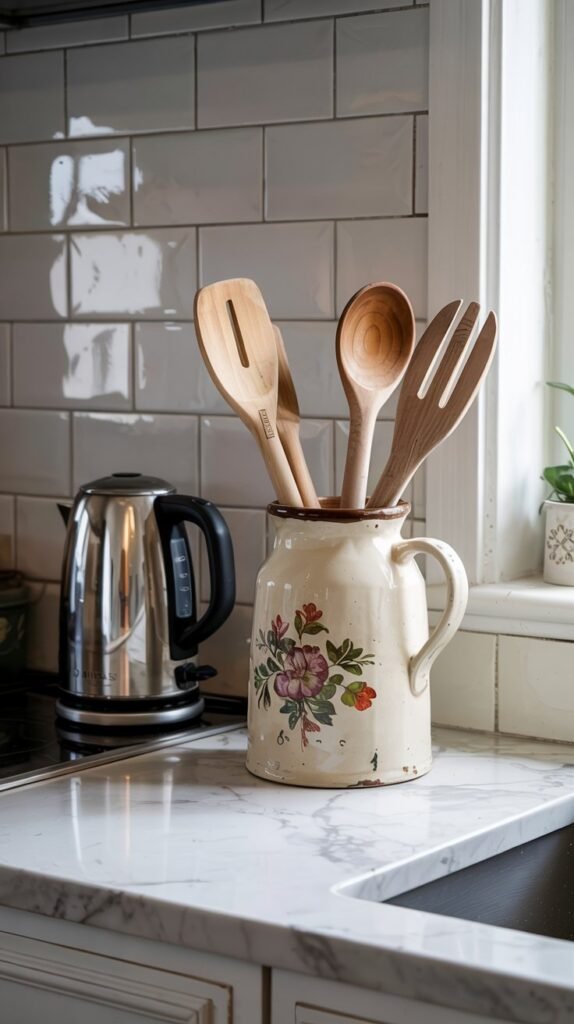
🔗 Want more ideas? Visit my post on Colorful Ceramic Vases to Brighten Any Room for styling tips that blend beautifully with thrifted finds.
Final Thoughts
Using thrifted ceramics to create budget kitchen decor is about more than saving money—it’s about building a space that feels alive, layered, and full of character. With a little intention and care, each plate, mug, or bowl can become a meaningful part of your home.
So next time you wander through a secondhand shop, pick up that speckled cup or forgotten plate. You might just find the perfect piece to make your kitchen feel more like you. 💛plate. You might just find the perfect piece for your windowsill or wall.


















